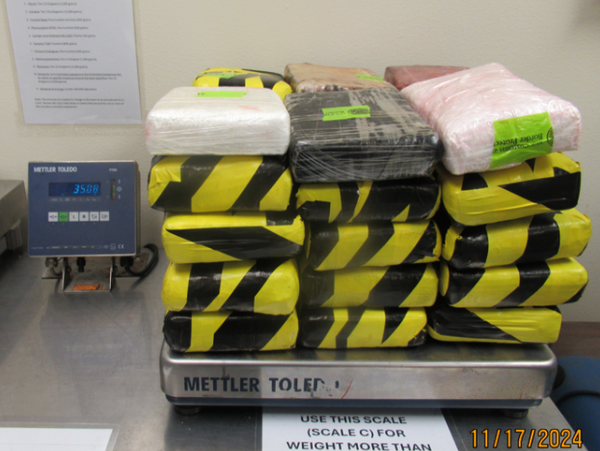A change in FIA regulations that coincides with the Safari Rally moving to a more traditional March date in Kenya's rainy season has allowed Rally1 teams to fit these devices to cars for the first time.
Snorkels have long been a feature in the WRC and have been particularly associated with the Safari Rallys of the past. Perhaps the most iconic illustration of these in action is the now famous vision of a Toyota Celica submarining through one of Kenya's notorious mud holes in the mid-1990s.
The protruding intakes that rise into the air from the bonnets of rally cars have proven to be a necessary piece of kit for tackling the most gruelling event on the WRC calendar.
Once again they could prove to be valuable this weekend with Toyota, Hyundai and M-Sport-Ford adding these systems to their Safari Rally survival kits.
A snorkel is a device designed to protect the engine from ingesting water or dust, which may affect combustion and can even severely damage the engine. It is particularly effective at the Safari Rally, which features thick fesh-fesh sand and deep water splashes.

The frequency of the latter is anticipated to be much higher for this year's edition due to the threat of heavy rain showers given the event is now held in the rainy season.
It only takes one split-second moment in these conditions for an engine to flood, ending victory hopes in a heartbeat, ensuring that snorkels could potentially be crucial bits of kit.
How do the snorkels work?
The snorkel essentially enables the engine an obstructed route to suck in clean air. Operating the device falls into the hands of the co-driver, who in M-Sport's case touches a button in the cockpit to activate the system if conditions become treacherous.
These systems can be activated throughout an entire stage, but this will come at the cost of a performance advantage, so drivers will only use them when necessary.
"Basically, the aim of the snorkel is to have an auxiliary air intake and we know in Kenya you can get a lot of soft sand called fesh-fesh and often it comes up over the car.
"Equally, we know with the event being earlier in the season than normal, the chance of it being wet, as the guys found on the recce, can be pretty high," M-Sport's lead development engineer Tim Jackson explained to Motorsport.com.
"The main task of it is to have an auxiliary air intake to make sure that the air coming into the engine is as clean as possible so that you are not affecting performance.
"Ours is operated by the co-driver pretty much in a similar way to water splash valves that we have had in the past. In normal circumstances, you are using the standard air intake which all of the teams design to get the maximum performance out of the engine.
"In the instance where the crew feel there is a risk to that intake, whether it is going through a river crossing or a large water splash or deep sand, then the co-driver is able to operate that air intake to divert the air into the engine from the snorkel.

"There is a small servo motor and it is electronically controlled and there is a button that they press and that operates the motor which moves a valve, which then allows the air to enter from the intake.
"For the normal driving, we want to maintain performance, so the idea is the guys just use the snorkel in case when it is really needed.
"It is a reasonable amount of work [to create] bearing in mind that it is one event, and we are hoping we don't need to use it for all the other events. It only takes one moment to catch you out."
While snorkels are only likely to be required for one WRC round this year, Toyota, Hyundai and M-Sport have spent a considerable amount of time designing and perfecting their systems for Kenya.
M-Sport has opted for a traditional snorkel mounted on the right-hand side of the Ford Puma's bonnet, which then climbs up the A-pillar. Hyundai is yet to show off its final design, but rival Toyota has revealed a radical approach to its snorkel.
Toyota's snorkel is mounted to the right side of the GR Yaris's bonnet. Interestingly its device runs up the A-pillar before then crossing the roof of the car. The system transforms into a carefully sculpted shape to avoid affecting the car's aerodynamics.
When asked about Toyota's design, Jackson added: "I think the main aims will still be the same for all teams which are for the device to not have a detrimental effect on the driver's visibility while trying to do that design in the most aerodynamic way as possible, and not have a detrimental effect on the aerodynamics of the car.

"If you can do the design and hit all of those targets and you can do a design and perhaps get some additional gain from it, then you try and implement that."
The unpredictable nature of Kenya's weather and the speed at which hot dry gravel can transform into thick mud means that it's difficult to know whether snorkels will be required or not.
However, these devices that hark back to the past could well be crucial in deciding the outcome of this year's Safari Rally Kenya.
"It is one of those things where nobody has forced us to do it," said Jackson. "The opportunity exists in the regulations and if you decide not to do something you could look pretty foolish.
"You have to have that contingency. It could be that it is not needed at all over the weekend, but you can't afford not to take that risk. It only takes one moment for it to be worth its weight in gold."







